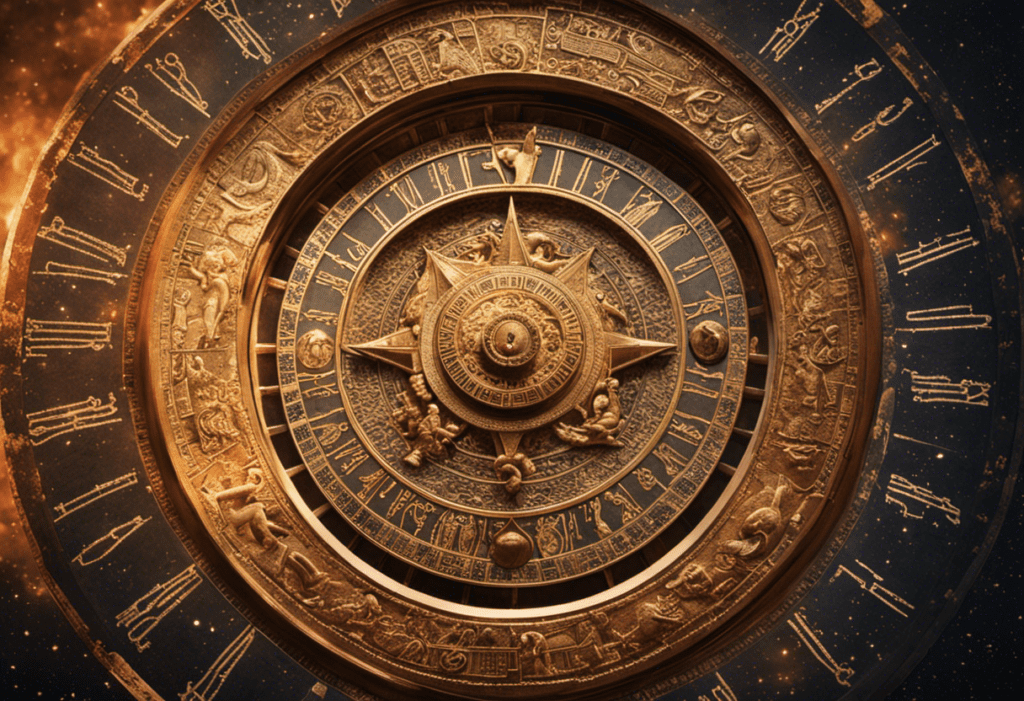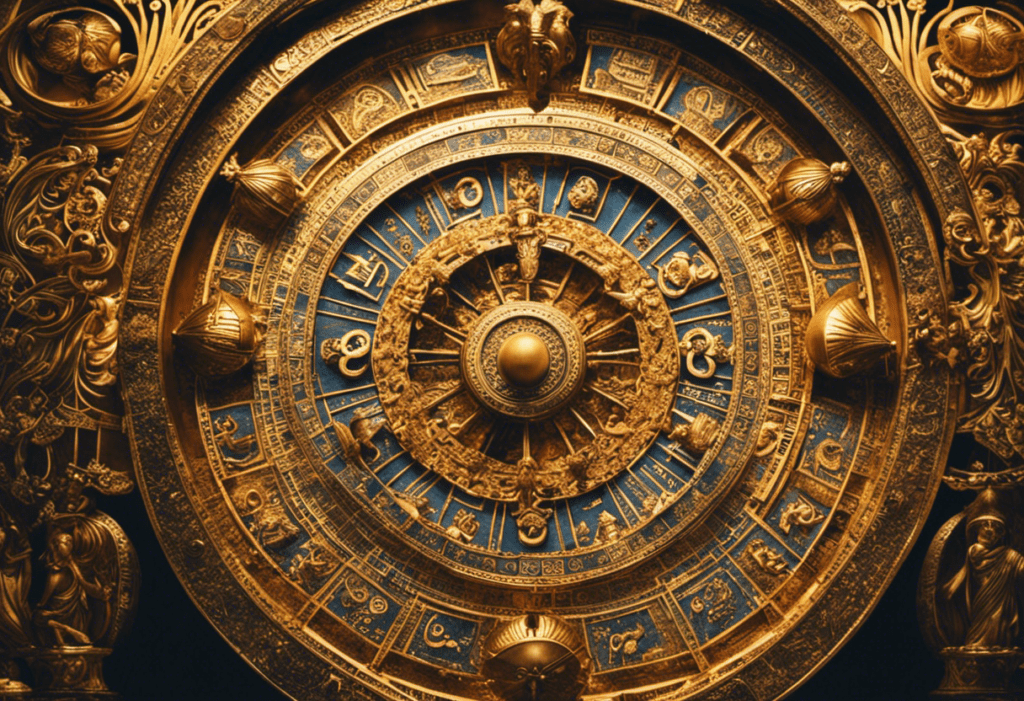In the ever-changing tapestry of time, the Zoroastrian calendar has stood as a testament to the ancient wisdom and cultural heritage of its followers.
Spanning centuries, this calendar has undergone a remarkable evolution, shaped by the influences of Zoroastrianism and the integration of cultural practices.
Through adaptations and the spread to different regions, the Zoroastrian calendar continues to hold significance in the modern era.
This article explores the fascinating journey of this calendar, shedding light on its historical significance and enduring relevance.
Key Takeaways
- The Zoroastrian calendar has ancient origins and was influenced by astrology and celestial bodies, with months named after Zoroastrian deities.
- The calendar reflects shifts in the natural world and aligns with astronomical events, while also integrating religious festivals and emphasizing purification.
- Over the centuries, the calendar has undergone modifications and adaptations, including the incorporation of Persian festivals and the influence of the Islamic calendar.
- The Zoroastrian calendar has spread beyond the Zoroastrian community and continues to have modern-day significance, promoting cultural pride and identity, facilitating social cohesion, and being adopted by other cultures and religions.
Ancient Origins of the Zoroastrian Calendar
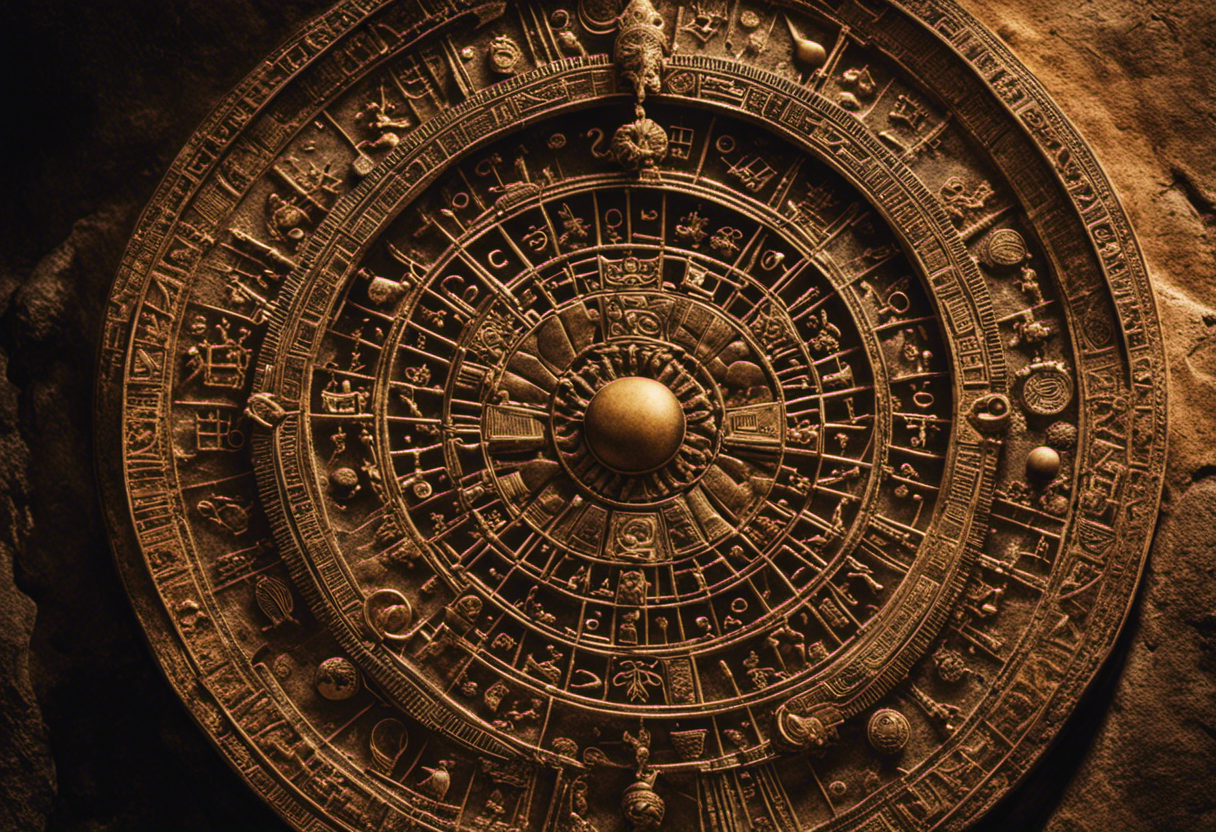

Interestingly, the ancient origins of the Zoroastrian calendar can be traced back to the prehistoric era, providing valuable insights into the development of this ancient timekeeping system.
The Zoroastrian calendar is believed to have been influenced by astrology and has a strong connection to seasonal changes. Astrology played a significant role in the development of the Zoroastrian calendar. The ancient Zoroastrians believed that the movements and positions of celestial bodies directly influenced human life and events on Earth. They observed the patterns of the stars and planets and incorporated them into their calendar system. This connection between astrology and the calendar allowed the Zoroastrians to predict and plan important events based on celestial alignments.
Moreover, the Zoroastrian calendar is closely tied to the changing seasons. The calendar consists of 12 months, each named after a specific Zoroastrian deity. These months reflect the shifts in the natural world, marking important agricultural and seasonal events. The Zoroastrians recognized the significance of the changing seasons in their daily lives and incorporated this knowledge into their calendar system.
Influence of Zoroastrianism on the Calendar
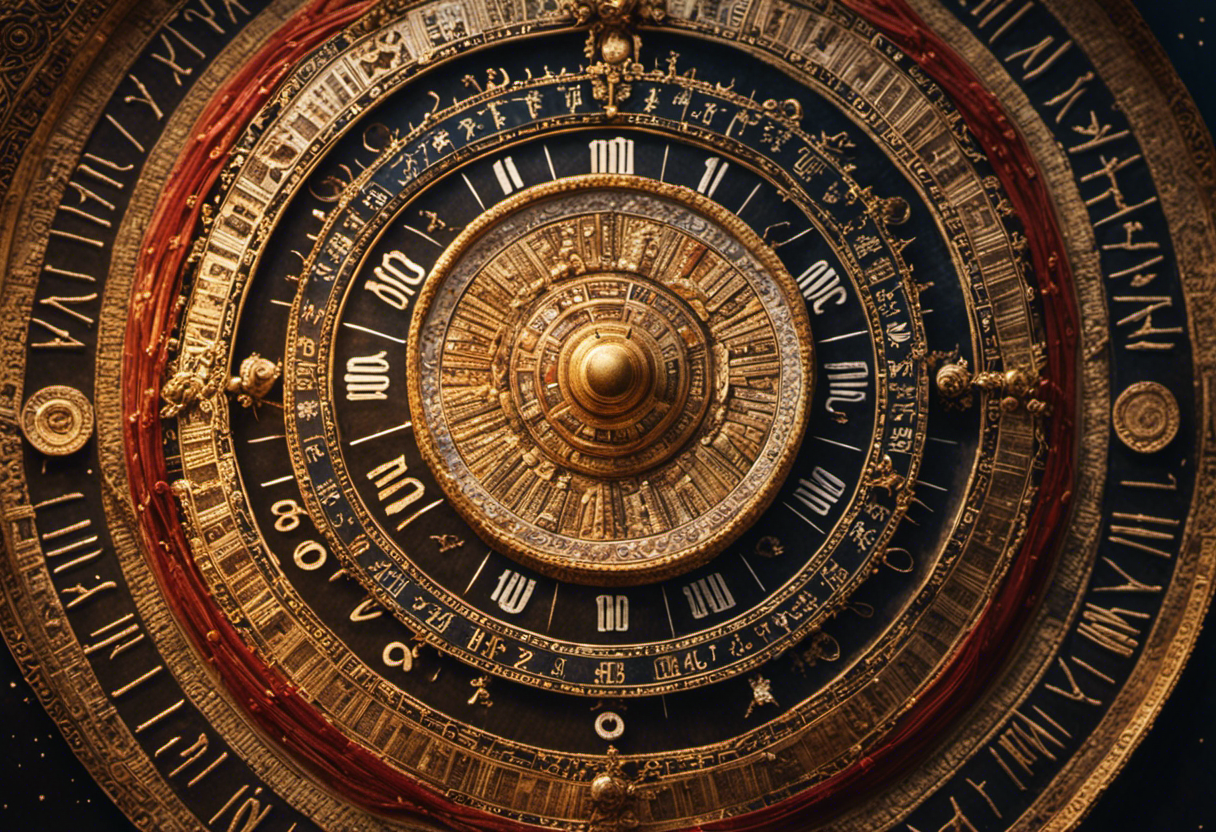

The influence of Zoroastrianism on the calendar is evident in its incorporation of important religious festivals and rituals. Zoroastrianism, one of the oldest known religions, has had a profound impact on the development of the calendar system. Here are four ways in which Zoroastrianism has influenced the calendar:
-
Alignment with astronomical events: Zoroastrianism places great importance on celestial bodies and their movements. As a result, the Zoroastrian calendar is closely aligned with astronomical events, such as the solstices and equinoxes. This ensures that important religious festivals and rituals are celebrated at specific times of the year, in harmony with the natural world.
-
Integration of religious festivals: The Zoroastrian calendar incorporates numerous religious festivals and rituals, such as the annual celebration of Norouz (New Year) and the commemoration of the Prophet Zoroaster’s birthday. These festivals hold significant religious and cultural value for Zoroastrians, and their inclusion in the calendar highlights their importance in the religious tradition.
-
Cyclical nature: The Zoroastrian calendar follows a cyclical pattern, with specific festivals and rituals recurring annually. This cyclical nature reflects the belief in the eternal nature of the cosmic order and the continuous cycle of life, death, and rebirth.
-
Emphasis on purification: Purification is a key aspect of Zoroastrianism, and this is reflected in the calendar. Certain days are designated as auspicious for purification rituals, highlighting the importance of cleanliness and spiritual purity in the religion.
Overall, the influence of Zoroastrianism on the calendar is evident in its alignment with astronomical events, integration of religious festivals, cyclical nature, and emphasis on purification. These aspects reflect the central tenets and practices of the Zoroastrian faith.
Integration of Cultural Practices in the Calendar


The integration of cultural practices in the calendar is a significant aspect of its evolution. As societies interact and exchange ideas, they often incorporate elements of other cultures into their own traditions.
This integration can have a profound impact on religious practices, as beliefs and rituals may be influenced and adapted to reflect the cultural diversity of a community.
Understanding these cultural adaptations in the calendar allows us to appreciate the dynamic nature of religious traditions and the ways in which they have evolved over time.
Cultural Adaptations in Calendar
Significant cultural adaptations have shaped the Zoroastrian calendar, allowing for the integration of diverse cultural practices and ensuring its relevance and significance in contemporary society.
Over the centuries, the Zoroastrian calendar has undergone several historical modifications to accommodate cultural changes and meet the needs of the community. These adaptations have ensured that the calendar remains a vital aspect of Zoroastrian religious and cultural life.
-
Incorporation of Persian Festivals: The Zoroastrian calendar has integrated Persian festivals, such as Nowruz, which marks the beginning of the Persian New Year. This cultural adaptation has allowed Zoroastrians to celebrate their religious and national identity simultaneously.
-
Influence of Islamic Calendar: With the advent of Islam in Persia, the Zoroastrian calendar underwent modifications to align with the Islamic calendar. This adaptation demonstrates the flexibility of the Zoroastrian calendar to accommodate external influences.
-
Modern Relevance: Despite its ancient origins, the Zoroastrian calendar remains relevant in contemporary society. It continues to play a significant role in religious rituals, cultural traditions, and community events.
-
Global Diaspora: As Zoroastrians migrated across the globe, the calendar adapted to accommodate the needs of the diaspora communities. This cultural adaptation has helped to maintain a sense of unity and identity among Zoroastrians worldwide.
Impact on Religious Traditions
How have cultural practices been integrated into the Zoroastrian calendar?
The Zoroastrian calendar is an ancient system that has evolved over centuries, incorporating various cultural practices and customs.
Religious significance plays a crucial role in shaping the calendar, as it is deeply rooted in Zoroastrian beliefs and rituals.
One example of cultural integration in the calendar is the celebration of Nowruz, the Persian New Year, which marks the beginning of spring and is celebrated by Zoroastrians as well as other communities in the region.
Another example is the observance of religious festivals such as Mehregan and Sadeh, which are deeply ingrained in the Zoroastrian calendar customs.
These cultural practices not only provide a sense of identity and belonging for Zoroastrians but also contribute to the preservation and continuation of their religious traditions.
Adaptations in the Zoroastrian Calendar Over Time
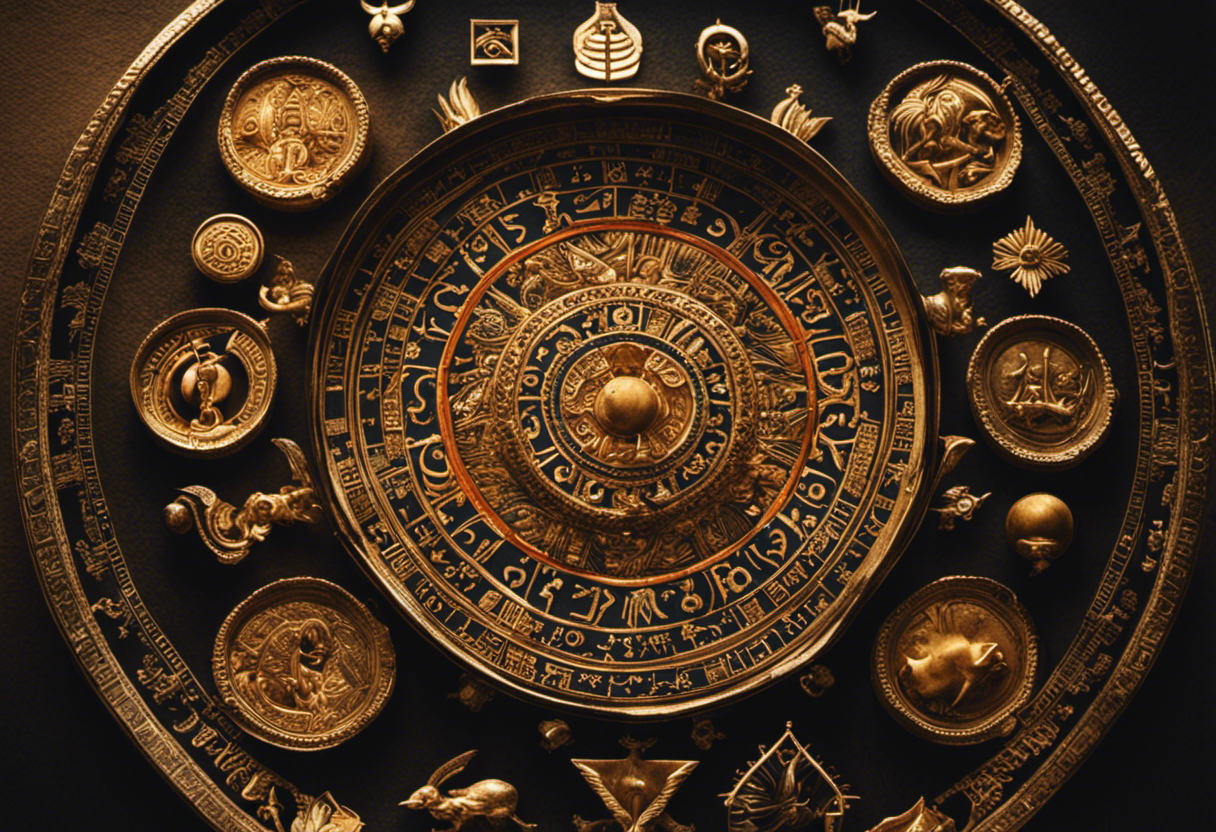

Adaptations in the Zoroastrian calendar over time have been shaped by historical events and cultural influences. The calendar has undergone modifications to align with changes in religious practices and societal needs.
These adaptations reflect the dynamic nature of the Zoroastrian faith and its ability to evolve and accommodate the changing times.
Historical Calendar Modifications
Throughout the centuries, numerous historical calendar modifications have been implemented in the Zoroastrian calendar, reflecting the dynamic nature of this ancient religious tradition. These modifications have been influenced by various factors, such as astronomical observations, religious practices, and cultural changes. The evolution of the Zoroastrian calendar can be traced through different periods, each marked by significant changes.
-
Early Calendar: The earliest known Zoroastrian calendar was based on a 360-day year and divided into 12 months. It underwent modifications to accommodate lunar observations.
-
Sasanian Calendar: During the Sasanian period, the Zoroastrian calendar underwent further changes, incorporating a solar intercalation system to align with the solar year.
-
Islamic Influence: With the advent of Islam in Persia, the Zoroastrian calendar faced additional modifications to accommodate Islamic practices, such as adopting the lunar month and the Islamic New Year.
-
Modern Calendar: In recent times, efforts have been made to standardize the Zoroastrian calendar, resulting in the Shahanshahi calendar, which is widely followed by the Zoroastrian community today.
These historical modifications highlight the adaptability and resilience of the Zoroastrian calendar, ensuring its relevance and continuity throughout the centuries.
Cultural Influences on Adaptation
The evolution of the Zoroastrian calendar over time can be attributed to cultural influences, as various adaptations were made to accommodate religious practices and societal changes.
One significant factor that has influenced the Zoroastrian calendar is globalization. With the increasing interconnectedness of the world, Zoroastrian communities have been exposed to different cultures and traditions, leading to a blending of practices. This has resulted in modifications to the calendar to incorporate elements from other belief systems and accommodate the diverse needs of the community.
Additionally, the impact of globalization on religious ceremonies cannot be overlooked. As Zoroastrian communities become more dispersed across the globe, there is a need to adapt religious practices and rituals to suit the local context. This has led to changes in the calendar to ensure that important religious ceremonies can be observed regardless of geographical location.
Spread of the Zoroastrian Calendar to Different Regions
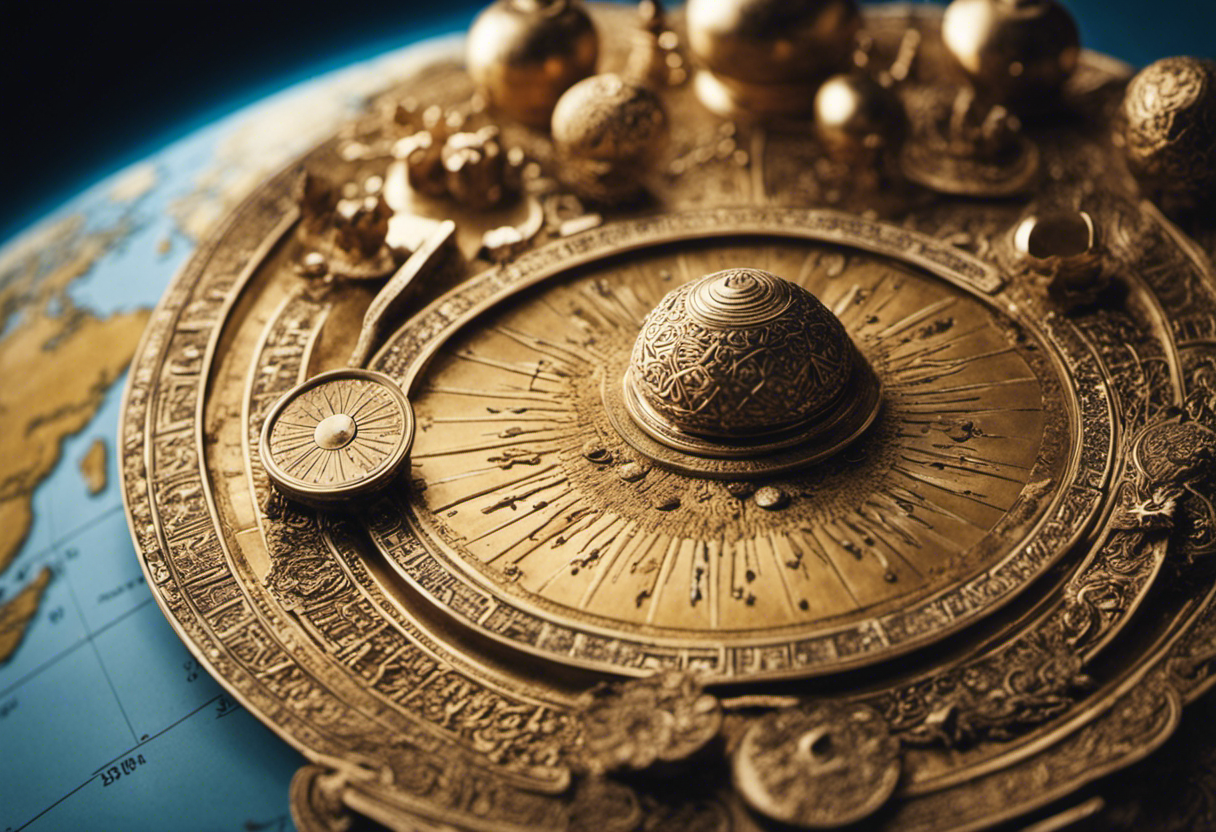

One significant aspect of the spread of the Zoroastrian calendar to different regions is its influence on the cultural practices of those societies. The Zoroastrian calendar, which originated in ancient Persia, has been adopted by various communities across the world, resulting in the assimilation of its traditions and customs into their own cultural fabric. This cultural diffusion has had several notable impacts:
-
Religious Practices: The adoption of the Zoroastrian calendar has led to the integration of Zoroastrian religious rituals and observances into the practices of these societies. For example, in regions where the calendar is followed, festivals such as Nowruz, which marks the Persian New Year, are celebrated with great enthusiasm.
-
Social Cohesion: The spread of the Zoroastrian calendar has facilitated a sense of unity and belonging among communities that follow it. The shared calendar serves as a common reference point for important events and occasions, fostering a sense of community and togetherness.
-
Cultural Exchange: The adoption of the Zoroastrian calendar has also resulted in the exchange of cultural practices and traditions between different regions. Communities that have embraced the calendar have incorporated elements of Persian culture into their own, enriching their cultural diversity.
-
Historical Continuity: By adopting the Zoroastrian calendar, societies have connected themselves to an ancient and revered tradition that spans centuries. This connection to the past helps preserve and honor their historical roots, promoting a sense of cultural pride and identity.
Overall, the spread of the Zoroastrian calendar has not only influenced the way societies mark time but has also profoundly impacted their cultural practices, fostering unity, cultural exchange, and a sense of historical continuity.
Modern-day Significance of the Zoroastrian Calendar
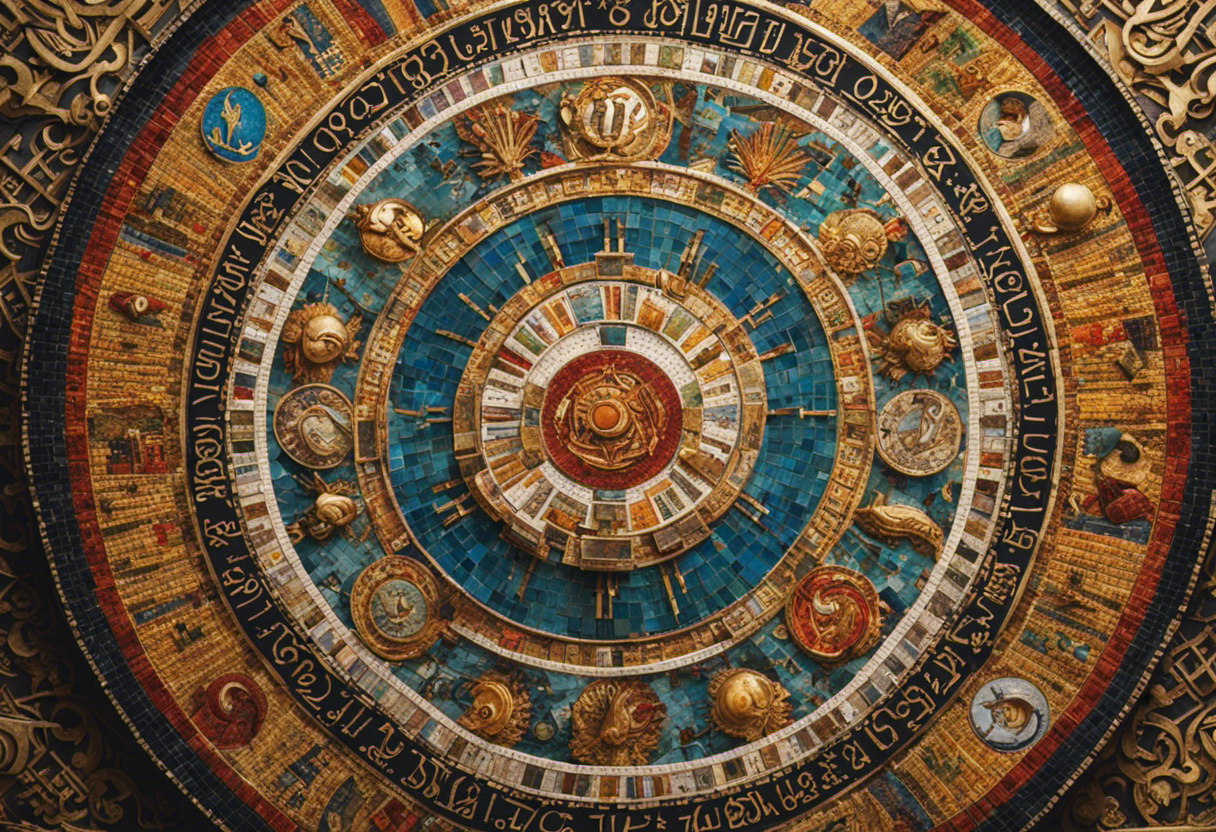

How does the Zoroastrian calendar continue to hold modern-day significance in various cultural and religious contexts?
The Zoroastrian calendar, also known as the Fasli calendar, continues to play a significant role in the lives of Zoroastrians and has also found its way into various cultural and religious contexts beyond the Zoroastrian community.
One of the main reasons for its continued significance is its association with important religious festivals and rituals. The calendar helps determine the dates for events such as Nowruz, the Zoroastrian New Year, and other seasonal celebrations. These festivals are not only religiously significant but also hold cultural importance for the Zoroastrian community and other communities that have adopted elements of their calendar.
Furthermore, the Zoroastrian calendar has also been adapted and incorporated into the calendars of other cultures and religions. For example, the Parsi community in India, a group of Zoroastrians who migrated from Iran, still follow the Fasli calendar and celebrate festivals according to its dates. Similarly, the Bahá’í Faith, which emerged from a Zoroastrian background, also uses a modified version of the Zoroastrian calendar for its religious observances.
Conclusion
In conclusion, the Zoroastrian calendar has evolved significantly over centuries, influenced by ancient origins, Zoroastrianism, and cultural practices. Adaptations have occurred over time, leading to its spread to different regions.
The modern-day significance of the Zoroastrian calendar lies in its role as a cultural and religious marker for the Zoroastrian community. Interestingly, statistics show that the calendar is still followed by approximately 190,000 Zoroastrians worldwide, highlighting its continued relevance and importance.

